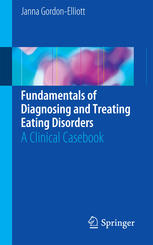

Most ebook files are in PDF format, so you can easily read them using various software such as Foxit Reader or directly on the Google Chrome browser.
Some ebook files are released by publishers in other formats such as .awz, .mobi, .epub, .fb2, etc. You may need to install specific software to read these formats on mobile/PC, such as Calibre.
Please read the tutorial at this link: https://ebookbell.com/faq
We offer FREE conversion to the popular formats you request; however, this may take some time. Therefore, right after payment, please email us, and we will try to provide the service as quickly as possible.
For some exceptional file formats or broken links (if any), please refrain from opening any disputes. Instead, email us first, and we will try to assist within a maximum of 6 hours.
EbookBell Team

4.0
76 reviewsThis concise text contains clinical cases covering different types of dysfunctional eating with a focus on the eating disorders in the DSM-5, including the new disorder Avoidant-Restrictive Food Intake Disorder (ARFID). Each case will follow the format of clinical presentation, diagnosis, discussion, and suggested readings. The discussion sections will prioritize treatment and management, with practical tips for clinicians. The text will also include boxed “quick snapshots” with important fundamentals that are relevant to the case and the diagnosis or diagnoses being presented. Presentations that are common in clinical practice, but that may not fit neatly into one specific diagnostic category, will also be reviewed, with guidance on principles of assessment, prioritization of problems, formulation, and management. The book encourages the consideration of comorbidities and differential diagnosis. The structure of the book’s content will give readers a head-start in honing their differential diagnosis skills in the area of eating disorders. The book is split into three categories, based on the most immediately visible features of the case: I. The person who eats too little, II. The person who eats too much, III. The person who eats in an odd or idiosyncratic way. For teaching purposes, several of the cases describe a “not normal” eating presentation that are not classified within one of the current definitions of a psychiatric disorder. Fundamentals of Diagnosing and Treating Eating Disorders is aimed at psychiatrists, primary care physicians, and other clinicians who may see patients with eating disorders.